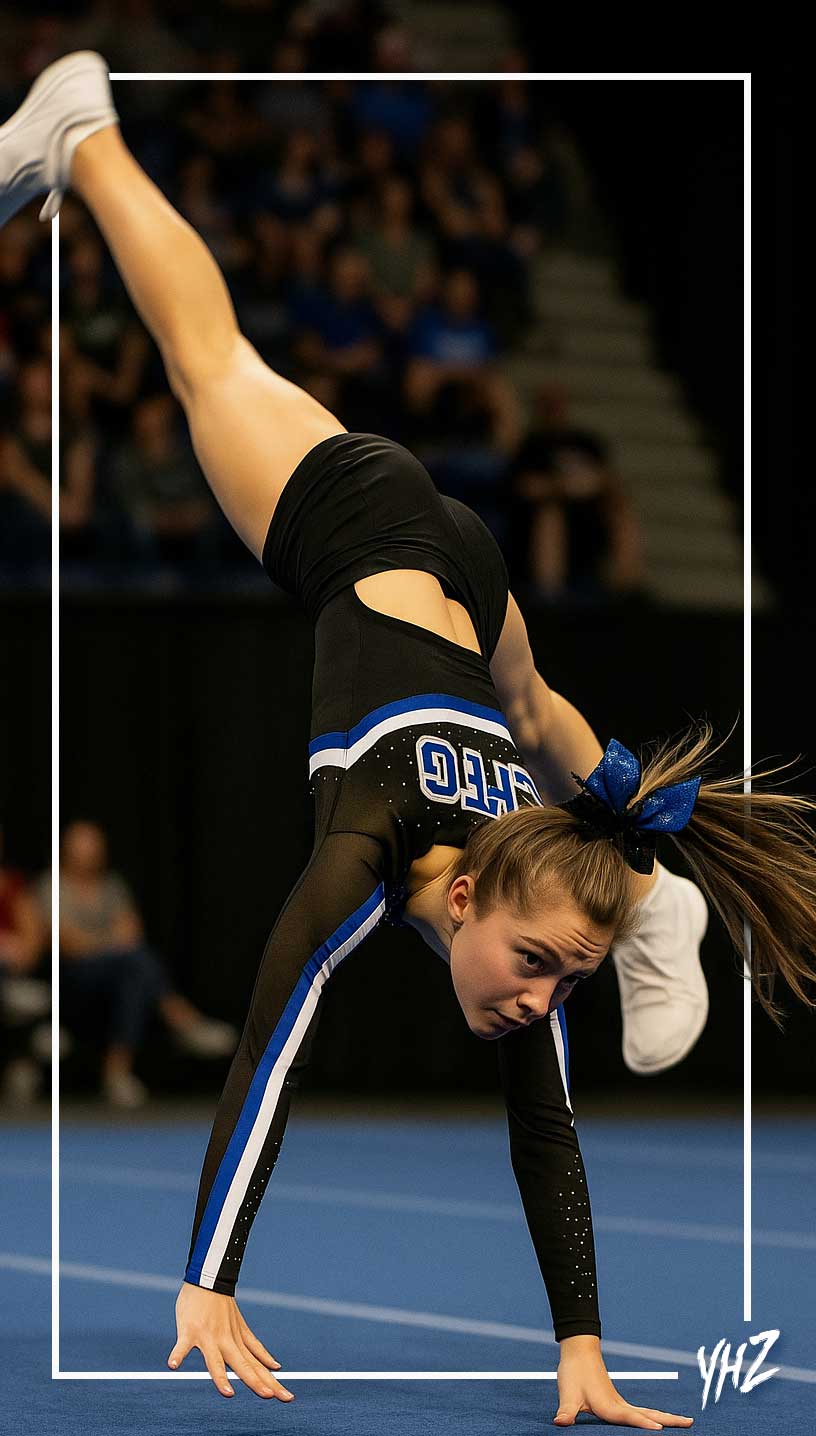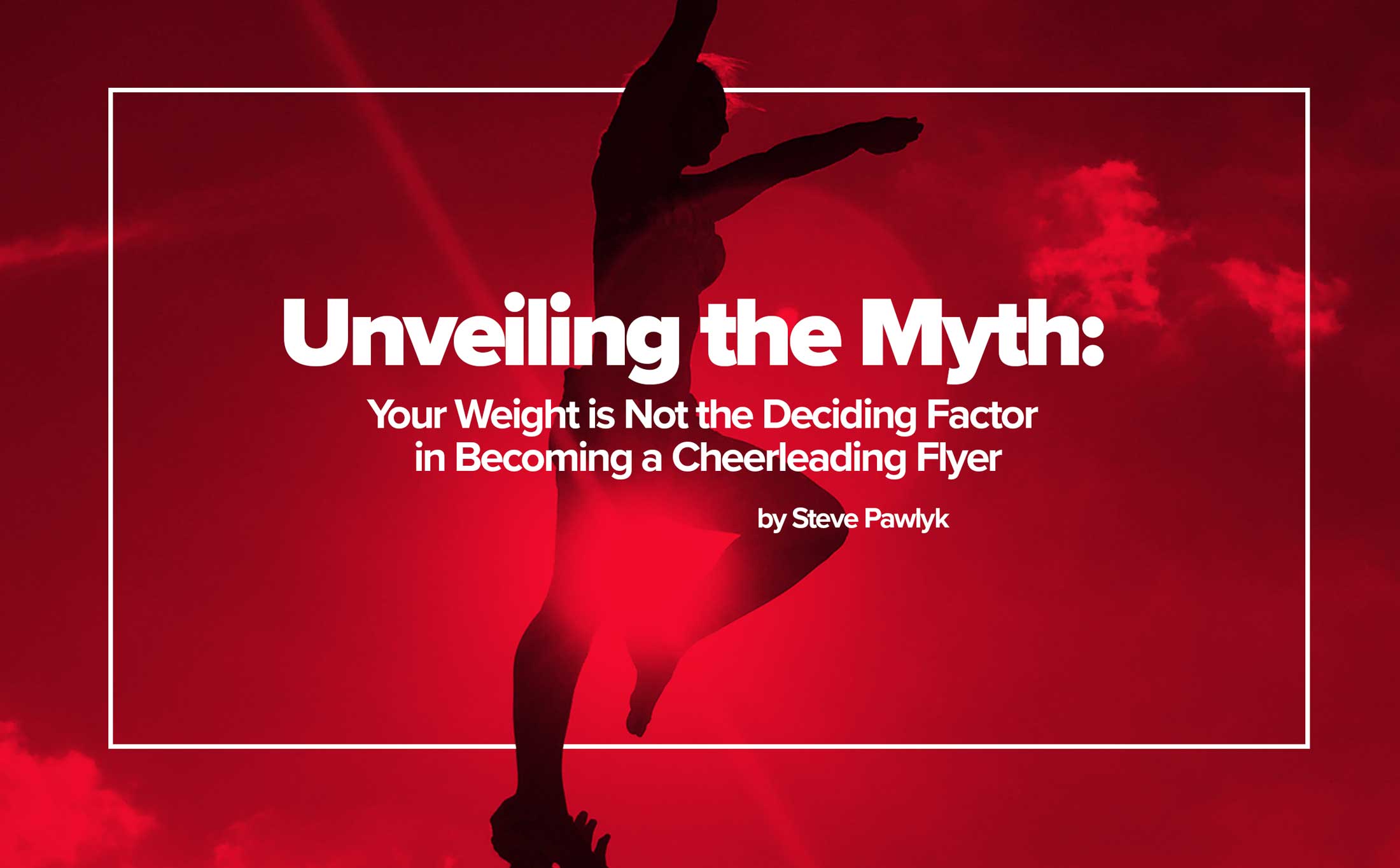By Steve Pawlyk
Published October 18, 2023
Today we’ll delve into the science of stunting, the psychology of team dynamics, and the art of performance, offering you actionable insights to elevate your squad to unparalleled heights.
Why Stunt Progressions Are Not Just for Rookies
While it’s easy to associate stunt progressions with beginner levels, even the most accomplished teams can benefit from revisiting these foundational building blocks. However, for the advanced team, the approach shouldn’t be repetitive but rather analytical. Here’s why:
- Risk Mitigation: A nuanced understanding of each progression allows coaches to pinpoint minor, often overlooked errors that could spell disaster in complex stunts.
- Skill Specialization: Mastering the nuances of each progression enables athletes to specialize in their roles, which in turn significantly improves individual and team performance.
- Performance Metrics: Leveraging tools like video analysis and biomechanics software allows coaches to optimize each movement, timing, and force, lending a scientific rigor to the art of cheerleading.
The Roles Re-Examined: More than Just Titles
In competitive cheerleading, roles are not just labels but encapsulate specific skill sets, expectations, and responsibilities that each team member must fulfill.
- Flyer: At advanced levels, training should include vestibular exercises to improve body awareness, control, and mid-air adjustment skills. Psychological coaching can also be beneficial for managing performance anxiety.
- Base: Specialized strength training regimes like plyometrics or isometric exercises can hone specific muscle groups that are vital for bases. Additionally, drills focusing on adaptive grip techniques can improve stunt stability.
- Spotter: Rather than being passive overseers, spotters should engage in active problem-solving during stunts. Communication drills can help them deliver effective, real-time feedback and corrections.
Mastering the Nuances: Beyond Basic Skills
While basic stunts form the foundation of all cheerleading routines, mastering their intricacies can yield exponential performance improvements.
Prep-Level Stunts:
- Thigh Stand with Core Activation: Incorporating core-engagement techniques can offer more stable thigh stands and can also improve the bases’ ability to adjust and adapt to movement variations from the flyer.
Extension-Level Stunts:
- Full Extension with Synchronized Breathing: Introduce meditative breathing exercises to help your team focus. Synchronized breathing between the bases and the flyer can add an additional layer of stability and control.
Intermediate Skills: The Untold Tricks
These transitional stunts require a blend of solid foundational skills and advanced techniques, making them critical stepping stones for aspiring champions.
- Bow and Arrow with Momentum Control: Emphasize the importance of core stability and dynamic balance to control momentum effectively. Advanced squads can also incorporate angular momentum calculations to improve performance.
- Basket Toss with Aerial Awareness: Introduce visualization and spatial awareness drills that flyers can employ mid-air to adjust their body position for a safer and more precise landing.
Elite Stunt Techniques: The Next Frontier
For squads ready to break barriers and defy gravity, these high-difficulty stunts provide the ultimate test of skill, teamwork, and courage.
- Rewind with Pre-Lift Cues: Employ auditory or tactile cues to ensure the entire team is mentally and physically prepared to execute a rewind flawlessly.
- Double Down with Angular Momentum Conservation: Advanced squads can use biomechanical analysis tools to evaluate the optimum rotational speed and body posture for executing a flawless Double Down.
Unseen Pitfalls Even Pros Should Avoid
Even seasoned coaches and elite athletes are susceptible to pitfalls. These are often due to overconfidence or complacency.
- Overconfidence: Assuming that a mastery of the basics negates the need for revisiting them can be a grave mistake.
- Technique Stagnation: The world of cheerleading is dynamic and rapidly evolving. Refusing to update and adapt your techniques to new standards and best practices can lead to performance plateaus.
Safety Measures for the Advanced
Even with advanced skills, safety remains paramount. From regular biomechanical assessments to sophisticated technologies like pressure-sensitive mats and motion capture, advanced safety measures are an investment in your team’s longevity and success.
Excellence in cheerleading stunting doesn’t come from mere repetition but from deep, insightful understanding and continuous innovation. This Advanced Guide to Stunt Progressions aims to catalyze your journey towards technical mastery, optimized performance, and world-class excellence.
IPP's Premade Mixes are USA Cheer Compliant and customizable! Add Sound FX, swap songs, & more! Add your Team Name to the mix for only $10!












